Don’t mind me, I’m just testing a new slideshow plugin for posting flickr sets to this blog.
[pictobrowser hankplank 72157617571987237]
Don’t mind me, I’m just testing a new slideshow plugin for posting flickr sets to this blog.
[pictobrowser hankplank 72157617571987237]
Here’s a pretty awesome video of coral gardening which include some time lapse shots of coral as it grows. I saw this on the blog Deep-Sea News, which I highly recommend for their “salty blogging.” Also check out our previous post about artificial reefs.
via videosift.com
Giant globs of mucus-like gunk called mucilages are on the rise. Formerly a summer phenomenon in the Mediterranean, rising temperatures have resulted in mucilages forming in winter and lasting for months. They can be up to 124 miles long. Made mostly of dead matter, they can harbor bacteria and viruses and pose a risk to swimmers. For more info, see National Geographic.
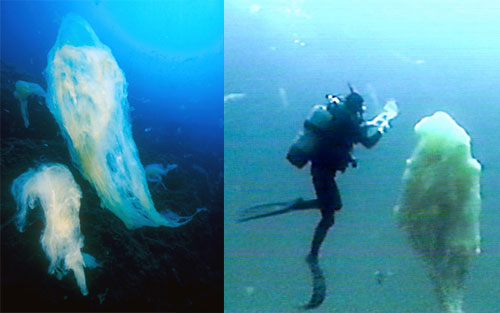
There’s a problem with your Filet-o-Fish. It may be overfished. It turns out that a deep sea fish called the Hoki (Macruronus novaezelandiae) is used for many fast food fish products, including up to 15 million pounds of McDonald’s sandwiches in some years. The Hoki also serves as yet another warning about depleting our fisheries, because it was thought to be a sustainable resource.
The rise of the Hoki as a food fish was partially because the Orange Roughy (picutred below) was found to be a very fragile resource. Thought to live up to 140 years, the Orange Roughy is slow to reproduce and mature. It probably does not take a genius to realize that you should probably avoid eating things that live that long. The Hoki lives only 25 years and was thought to be abundant in the New Zealand waters where it is fished, but without actually acknowledging dwindling stock, the government there has already slashed the quota by two-thirds. It seems that this fishery, which actually won an award for being sustainable and well-managed may have already become overfished only a few years after it really became significant in the 90s. Read more at the New York Times.
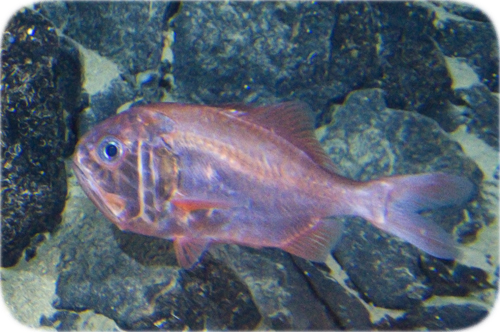
A new species of Ghost Shark was discovered off the coast of Southern California. It is now called the Eastern Pacific black ghostshark (Hydrolagus melanophasma) and it is a type of Chimaera. Chimaeras are cartilaginous fish that are very ancient in design – hundreds of millions of years old. Their closest relatives are sharks and rays. These critters can look mighty odd. Here’s a photo of a Chimaera we saw in Roatan, while deep underwater in the submarine Idabel.
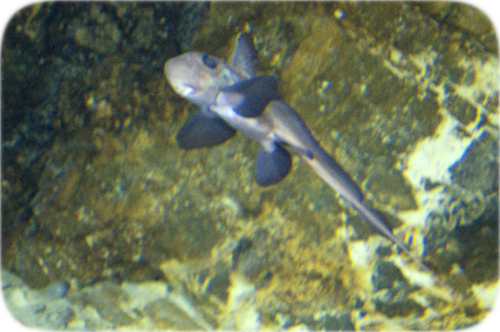
Aliens? No, Cnidarians. Cnidaria is a phylum of animals that includes jellyfish and anemones. Here, time lapse photography of cnidarians in aquariums is turned into video.
Cnidarian Lifeforms from Delrious on Vimeo.
One is Southern Fried Science, which is a marine biology and conservation blog. They have lots of important info on sharks and why they matter. There is also The Daily Chegwin, which features over 1,000 photos of the same goldfish.
Leah Neal, one of the intrepid Lionfish hunters we met in the Bahamas, sent us a link to the Die, Lionfish, Die facebook group. This is probably going to be about the only time we advocate fish killing here, but it is a special situation and it seems that the only chance we have of limiting their spread is human intervention.
We knew about Giant Isopods that live in the deep oceans. We have also seen smaller isopods that attach to the faces of fish and live off scraps that are left when the fish eat:
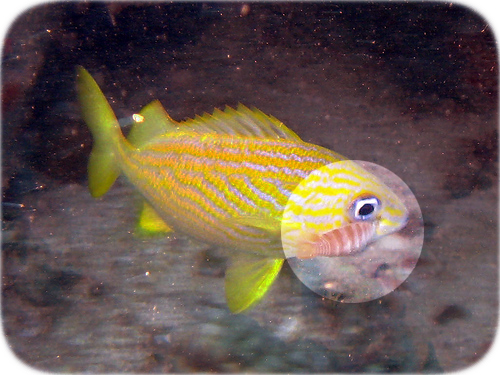
Until today, however, I did not know about isopods that live in the mouths of fish. And it gets worse. The Tongue Eating Louse (Cymothoa exigua) enters a fish through its gills and attaches to the base of the tongue, where it uses claws on its front legs to drain blood from the tongue. As the tongue atrophies, the parasite attaches itself to the tongue stump and acts as if it were the tongue. Apparently the fish can even control the parasite as if it were their tongue, although how we figured that out I am not sure.
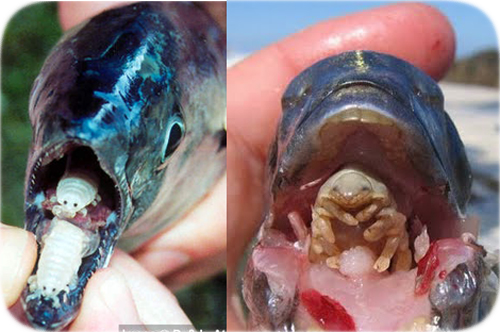
The parasites live off the blood or mucus of the fish and, aside from eating the tongue, do no other harm to their host. Normally found off the coast of California, they have also turned up in the UK in 2005 and 2009.